|
Drum Fish
Family Sciaenidae
Genus Pogonias (Lacepède, 1801)
Pogonias sp.
Age - Miocene to
present - Occurrence - Common
The most common fossil remains of the Pogonias sp. in New Jersey are the individual pharyngeal teeth
located in the back of the
throat, which allowed
them to pick-up, crush, and sort hard prey such as mollusks and
crustaceans. The shape is of these teeth is somewhat irregular, ranging
from circular to a rounded square. The teeth are small ( 2 - 5 mm) and
similar to the pharyngeal teeth of the
Tautoga.
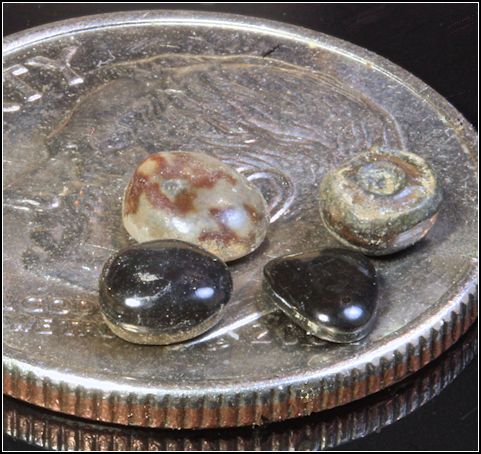
Plate 1
Pogonias sp. pharyngeal teeth
Monmouth County, NJ
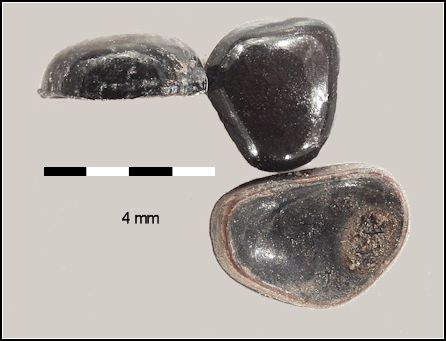
Plate 2
Pogonias sp. pharyngeal teeth
are irregular in shape.
About half the examples I've found are missing the roots.
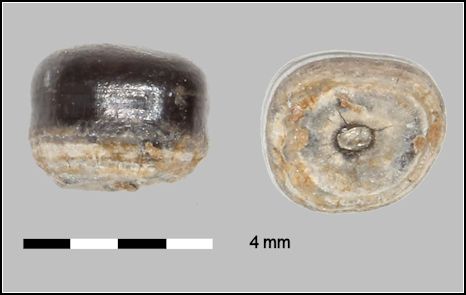
Pogonias sp. pharyngeal tooth
with root intact.
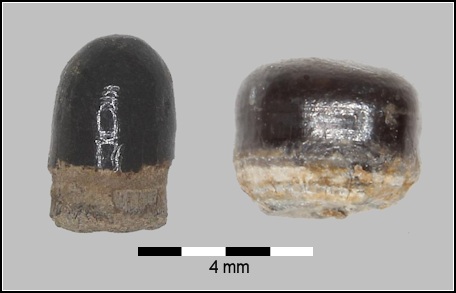
Comparison of
Tautoga
sp / Pogonias sp. pharyngeal teeth.
Tautoga
teeth are more conical with a longer root.
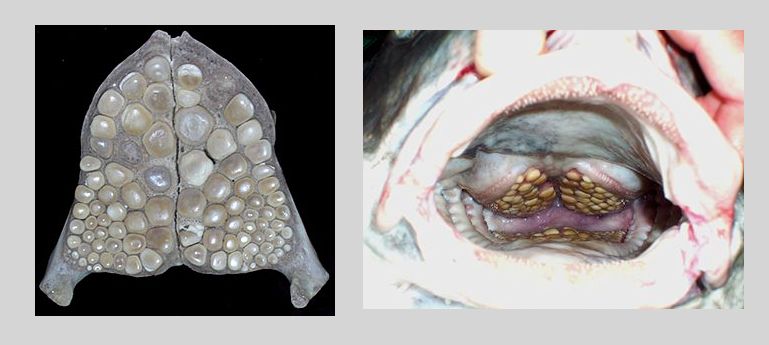
Modern Black Drum
Left - pharyngeal plates
Right - Arrangement of the plates in the back of the throat
Return to top of page
|